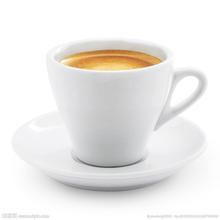Fragrant and delicious Coffee Flavor description of Nicaraguan Lemon Manor
Since July 1927, Augusto. Cesar. Sandino led the people in a guerrilla war against the US occupation, forcing the US military to withdraw in 1933. On February 21, 1934, the Commander of the Nicaraguan National Guard, Anastacio. Somocha. Garcia assassinated Sandino at the behest of US President Roosevelt. He became president in 1936 and established a pro-American "Cordillo" dictatorship for more than 40 years until 1979. In 1964, the Sandinista National Liberation Front (SPLF) was established to carry out a revolutionary struggle against the Somocha dictatorship. Managua, the capital of Nicaragua, is located in the west of the border, located on the south bank of Lake Managua, hence its name. The northwest is 140 kilometers away from the Collinto seaport on the Pacific coast. 55 meters above sea level. It is a Spanish city with beautiful scenery. Because it is located on the east side of the Pacific volcanic active seismic belt, there have been four strong earthquakes in the city in the past 100 years, one of which caused the worst damage to the city in December 1972. The rebuilt Managua has taken many important measures in reducing population density, moving large enterprises to other places, and improving the earthquake-proof capacity of buildings.
Nicaragua is one of the major coffee-producing countries, producing high-quality coffee. Even coffee from the Antigua Mountains of Guatemala, which is famous in Asia, imports raw beans from Nicaragua. Nicaraguan coffee is not well-known in Asia. But in fact, Nepalese coffee is already famous all over the world (Starbucks has many cooperative coffee farmers in Nepal), while the coffee quality produced by several coffee producing countries in Central America, such as Guatemala, Costa Rica and Nicaragua, is similar, mainly due to weather conditions, soil fertility, planting height and other conditions.
Nepalese coffee cultivation and production has a unique environment, all over the fertile volcanic ash soil, coupled with shade planting mode, established a good production quality, Nepalese coffee has a rich mellow and fragrant taste, moderate acidity and a good sense of balance of bitter taste, in the eyes of international coffee experts, it is regarded as high-grade in many countries, due to political reasons, coffee production will be seriously affected. Nicaraguan coffee industry is no exception. The 1979 revolution forced coffee planters to flee to Miami. A period of indecision followed, when the government considered whether to redistribute land, including many plantations, which led to a shortage of coffee and a decline in production, from more than 1 million bags in the early 1970s to less than 600000 bags in 1990. Now the Government has opened up the coffee industry and private owners have taken control of the market. The best coffee is produced in Sinotega and Novo Segovia in Matagalpa. It has moderate acidity, delicious aroma and is very lovely.
"Nicaragua | Nicaragua Coffee Nicaragua coffee Nicaragua Coffee Bean w.kaf.name"
Nicaragua is now one of the poorest countries in Central America. Due to its poor economic foundation, the coffee industry is still relatively backward, while coffee farmers are in extreme poverty. Fortunately, Nicaraguan coffee has received some foreign aid funds to improve the quality of its coffee. The coffee produced in Nicaragua's Madagelba, Sinodega and Segovia is highly respected by coffee lovers all over the world. In particular, the coffee produced in Madaguelba is very similar in taste to Kenyan AA coffee.
When tasting Nicaraguan coffee, it is best to drink cold water first, so that you can better feel its mellow taste. Drink coffee while it is hot, because the tannins in Nicaraguan coffee are easy to change during cooling, and the taste becomes sour, which will affect the flavor of the coffee. You can add the right amount of sugar, and then add cream. Enjoy a cup of high-quality Nicaraguan coffee, you can not only experience the different levels of coffee taste, but also help to improve the ability to appreciate coffee.

Important Notice :
前街咖啡 FrontStreet Coffee has moved to new addredd:
FrontStreet Coffee Address: 315,Donghua East Road,GuangZhou
Tel:020 38364473
- Prev

Introduction to the method of grinding degree of coffee flavor description in Manor Erida, Panama
Growing environment Panama is a small country located in the center of the American continent. The waters of the Atlantic and Pacific oceans flood its beaches. Panama is located at 9 degrees north latitude, the meeting point of the Central Mountains, where Mount Baru, one of the highest volcanoes in Central America, is located. The Baru volcano has an altitude of more than 11400 feet, and the land around it is rich in nutritious and fertile soil.
- Next

Introduction to coffee flavor description of Paradise Bird Manor in Papua New Guinea
In Papua New Guinea, about 75% of coffee products come from small local farmers.
Related
- Does Rose Summer choose Blue, Green or Red? Detailed explanation of Rose Summer Coffee plots and Classification in Panamanian Jade Manor
- What is the difference between the origin, producing area, processing plant, cooperative and manor of coffee beans?
- How fine does the espresso powder fit? how to grind the espresso?
- Sca coffee roasting degree color card coffee roasting degree 8 roasting color values what do you mean?
- The practice of lattes: how to make lattes at home
- Introduction to Indonesian Fine Coffee beans-- Java Coffee producing area of Indonesian Arabica Coffee
- How much will the flavor of light and medium roasted rose summer be expressed? What baking level is rose summer suitable for?
- Introduction to the characteristics of washing, sun-drying or wet-planing coffee commonly used in Mantenin, Indonesia
- Price characteristics of Arabica Coffee Bean Starbucks introduction to Manning Coffee Bean Taste producing area Variety Manor
- What is the authentic Yega flavor? What are the flavor characteristics of the really excellent Yejasuffi coffee beans?

